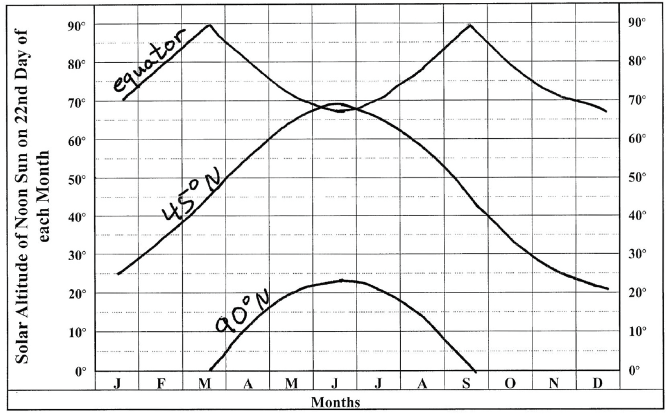Describe the three processes of energy transfer
What will be an ideal response?
Answer: Conduction: movement of heat through a substance without appreciable movement of molecules. Convection: The transfer of heat by the mixing of a fluid. Radiation: Propogation of energy through empty space.
You might also like to view...
On the chart, use the data from Figure 11-2 to plot the altitude of the noon Sun on the 22nd day of each month for the equator, 45° N, and 90° N. Connect the values for each latitude with a labeled line (you may also use a red line for the equator, a green line for 45° N, and a blue line for 90° N). Plot negative angles as a solar altitude of 0°.

Using the completed chart, answer the following questions:
(a) On June 22, at which latitude (the equator or 45° N) is the noon Sun highest in the sky?
(b) Does the noon Sun at the North Pole ever get as high as it is on January 22 at 45° N?
Describe the structure and properties of the typical cold front and explain what usually happens when it meets a warm front
What will be an ideal response?
A lake classified as euthrophic has high nutrient content
Indicate whether the statement is true or false
Which of the following deep-water fish was originally called the toothfish and is now on the Seafood Watch List of fish to avoid purchasing?
A) Alaskan Salmon B) Australian Slimehead C) Chilean Seabass D) Greenland Halibut E) Orange Roughy